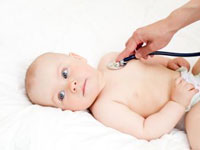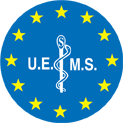More research, more availability and more information compared with 5 years ago according to the European Commission's progress report

On 24 June 2013, the Commission published a progress report on medicines for children covering the five years since the Paediatric Regulation came into force.
This preliminary snapshot points to improvements in the paediatric medicines landscape: better and safer research, more medicines for children on the EU market and more information for parents and health professionals.
The main provisions of the Paediatric Regulation [(EC) 1901/2006] were applicable from 26 July 2008, to meet three main objectives:
- To ensure high-quality research into the development of medicines for children;
- To ensure, over time, that the majority of medicines used by children are specifically authorised for such use with appropriate forms and formulations;
- To ensure the availability of high-quality information about medicines used by children.
How far have we come on meeting these objectives in the last five years?
Better and safer research
Before the Paediatric Regulation entered into force, many pharmaceutical companies considered the adult population as their main market. Research into the potential use of an adult medicine in children was often side-lined or not considered at all. Today's report shows that the situation is changing:
- Pharmaceutical companies now prepare paediatric investigation plans1 (PIPs) when developing a new product. By 2012 the European Medicines Agency (EMA) had agreed 600 PIPs.
- 33 of the 600 approved PIPs had been completed by the end of 2012, and it is expected that many more of them will be completed in the next five years.
More medicines available to children
- Since the Regulation came into force, 31 out of 152 new medicines have been authorised for paediatric use and many more authorisations are expected in the coming years.
- By the end of 2011, 72 new paediatric indications had been approved for already authorised medicines. Moreover, 26 new pharmaceutical forms were authorised for use in children.
More information on medicines used in children
To address the lack of adequate information on the use of medicines in children, the Paediatric Regulation requires that companies submit their data on safety of efficacy of products authorised for use by children, to the competent authorities.
- Since 2008, more than 18 000 studies on roughly 2 200 medicinal products have been submitted to the competent authorities.
- The analysis of those studies resulted in assessment reports on 140 active substances for medicines authorised nationally. For centrally approved medicines, the number is 55.
Next steps
Whilst the report shows considerable improvements in the developments of medicines for children the Commission will continue to monitor the implementation of the Paediatric Regulation, thereby also addressing some weaknesses or deficits that have been identified so far.
Disclaimer:This news arises from information provided by external entities to the UEMS. The information and views set out in this news are those of the author(s) and do not necessarily reflect the official opinion of the UEMS. Sole responsibility for this content lies with the author(s) and the UEMS cannot be held responsible for any use that may be made of the information contained therein.
